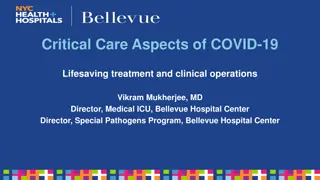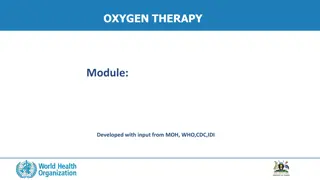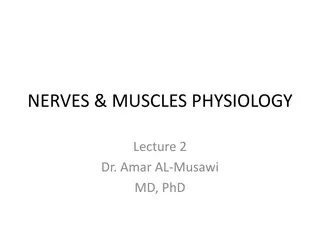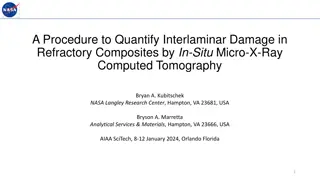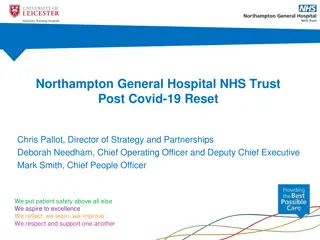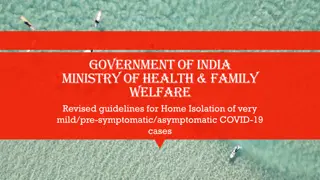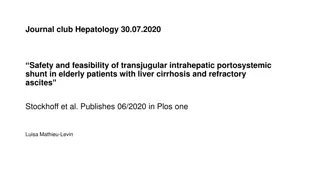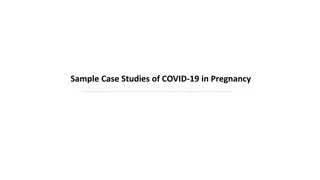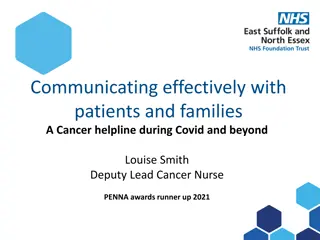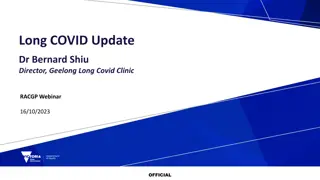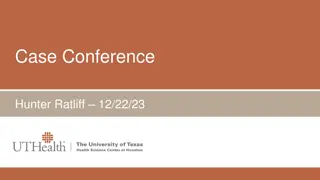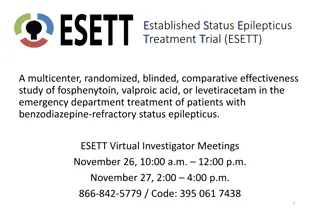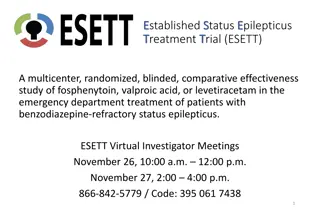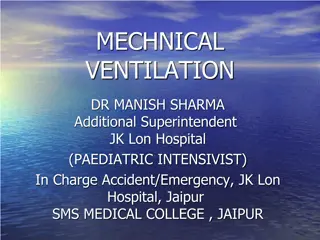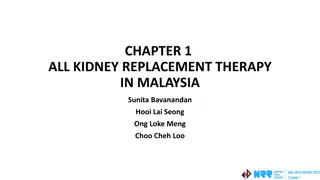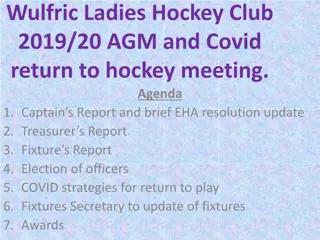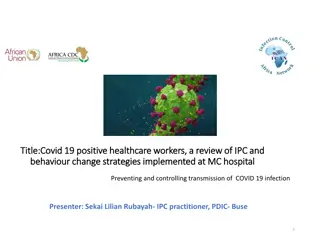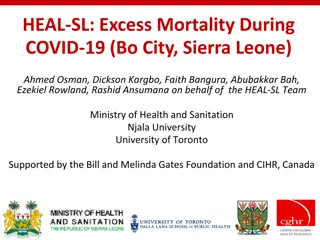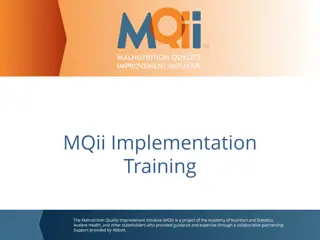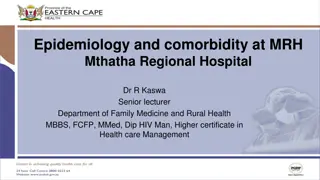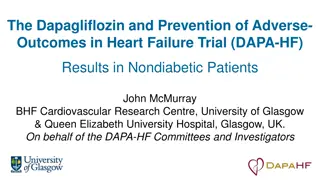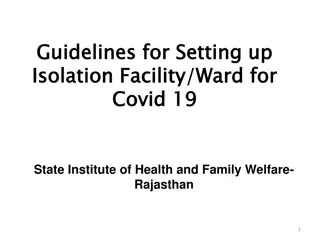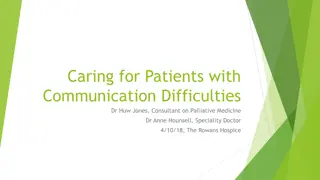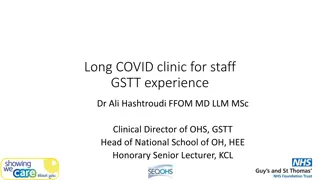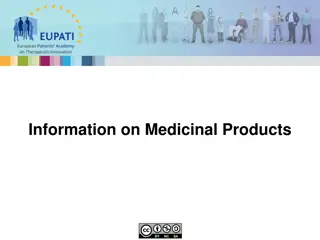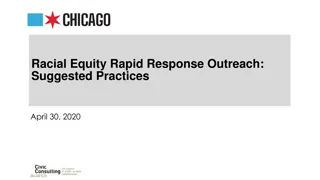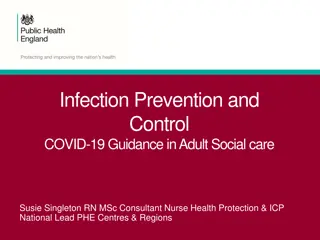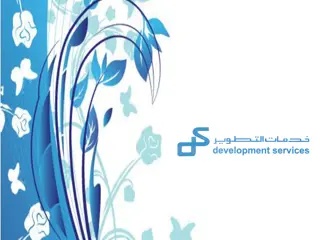Effective Management of ARDS and Refractory Hypoxemia in COVID-19 Patients
Management of ARDS involves oxygen support and mechanical ventilation along with treating the underlying cause. Lung-protective ventilation strategies such as the OLA approach are recommended. Refractory hypoxemia in COVID-19 patients is challenging, often requiring adherence to ARDS guidelines. Maintaining adequate oxygen saturation levels is crucial in these cases.
Download Presentation

Please find below an Image/Link to download the presentation.
The content on the website is provided AS IS for your information and personal use only. It may not be sold, licensed, or shared on other websites without obtaining consent from the author. Download presentation by click this link. If you encounter any issues during the download, it is possible that the publisher has removed the file from their server.
E N D
Presentation Transcript
Management of ARDS and refractory hypoxemia in covid19 patient
Management of ARDS is oxygen support along with mechanical ventilation and treatment of underlying cause. Management of ARDS Mild ARDS can be managed with NIV or HFNC while moderate to severe ARDS requires endotracheal intubation with mechanical ventilation.
Lung protective ventilation in ARDS Protective lung strategy also known as open lung approach (OLA) is the standard of care for the management of patients with ARDS. It is a combination of low tidal volume ventilation (LTVV) strategy and application of PEEP above lower inflection point LTVV frequently results in alveolar hypoventilation leading to permissive hypercapnia. LTVV also induces shear injury due to repetitive opening and closing of alveoli with each breath. To overcome this drawback, PEEP should be applied above lower inflection point to prevent cyclic atelectasis.
So far no universally accepted method of applying PEEP has been established. Applying the highest PEEP limiting the plateau pressure to 28 30 cm of H2O seems like a reasonable approach. OLA strategy is sufficient to oxygenate the majority of patients with ARDS. Lung protective ventilation in ARDS SCCM recommends setting the ventilator to a tidal volume of 4 to 8 mL/kg predicted body weight (PBW), with plateau pressure (Pplat) 30 cm H2O, and initial positive end- expiratory pressure (PEEP) of 10 to 12 cm H2O. PEEP should be increased in increments of 2 to 3 cm provided that Pplat remains 30 cm H2O
Hypoxemia not responding to conventional therapy is considered as refractory hypoxemia. There is no universally accepted definition of refractory hypoxemia. Refractory hypoxemia For practical purposes, various criteria have been applied. Most commonly it is considered as either (1) PaO2 60 mmHg or (2) PaO2/FiO2 100 or (3) Sp02 <88% on FiO2of 0.8-1.0 with a positive end-expiratory pressure (PEEP) of 5 cm H2O with plateau pressure 30 cm H2O.
Refractory hypoxemia in Covid 19 patients occurs due to moderate to severe ARDS. There are no separate guidelines to manage COVID19 patients with refractory hypoxemia. SCCM recommends to follow guidelines for ARDS. Refractory hypoxemia SCCM recommends Sp02 of 92% to 96% in COVID 19 ARDS.
Modalities for refractory hypoxemia 1. Use of neuromuscular blockade (NMB) 2. Prone positioning 3. Recruitment Maneuver 5. High frequency oscillatory ventilation (HFOV) 6. Extracorporeal membrane oxygenation (ECMO) 4. Inhaled Nitric oxide (iNO)
NMB Spontaneously, breathing patients with ARDS usually have a high respiratory drive thereby generating larger than targeted tidal volumes per breath that predispose patients to risk of volutrauma and biotrauma. Advantages: NMB eliminates muscle activity thereby resulting in decreased oxygen consumption, and improved patient-ventilator synchrony Disadvantages: paralysis interferes with neurological assessment and has been found to be associated with critical illness polyneuropathy and posttraumatic stress disorder when compared to patients receiving sedation alone. It is necessary to limit their usage to shortest possible time.
Recruitment maneuvers Recruitment maneuver (RM) is the process of transiently increasing transpulmonary pressure with the aim of recruiting the collapsed alveoli. Generally, it is defined as, intermittent or sustained, application of pressure higher than that applied for a normal breath for a short period of time (usually up to 40 s). Sigh and sustained inflation are the two most commonly used RMs.
For mechanically ventilated adults with COVID-19 and hypoxemia despite optimizing ventilation, SCCM suggest using recruitment maneuvers, over not using recruitment maneuvers. Recruitment maneuvers SCCM recommend against using staircase (incremental PEEP) recruitment maneuvers
Prone positioning Improvement in oxygenation with prone ventilation is multifactorial. The proposed mechanisms are change in regional diaphragm motions, increased functional and residual capacity, better ventilation- perfusion matching, better secretion clearance, reduced ventilator- induced lung injury (VILI), and anterior shift of the mediastinal structures in prone position. SCCM recommends 12 to 16 hrs prone ventilation for moderate to severe ARDS
Complications Pressure ulcers Unplanned extubation Prone positioning Loss of vascular access Nerve compression Retinal damage Crush injury
It is a labor-intensive procedure requiring a coordinated effort and minimum of three staffs. Special attention has to be paid to keep all the lines and tubes secured during the pruning process. Log Roll method should be used. Prone positioning Head of the bed should be elevated to 30 45 once the patient settles in the prone position. This helps in minimizing facial and ocular edema and improves gastric emptying.
iNO Inhaled pulmonary vasodilators cause selective pulmonary vasodilatation in well- ventilated lung units resulting in better ventilation-perfusion matching and improved oxygenation in ARDS patients Inhaled vasodilators have short half-lives and therefore are associated with lesser systemic side effects such as hypotension. iNO is costly, gets rapidly inactivated by hemoglobin, requires specialized equipment, and can result in methemoglobinemia (usually above 40 ppm, dose range - 2 80 ppm).
High-frequency oscillatory ventilation (HFOV) is a type of ventilation combining high respiratory rate (3 15 Hz, >900 breaths/min) and tidal volumes smaller than even the anatomical dead space volume, through the endotracheal tube An oscillatory pump is required for this purpose. This strategy results in homogenous distribution of ventilation by maintaining a high MAP, reduces the risk of VILI and hyperinflation HFOV Study failed to demonstrate a survival benefit though no harm was observed with HFOV. Currently, it is not recommended as an initial strategy for ARDS.
ECMO is a technique in which blood is removed from the patient and made to pass through an artificial lung and returned to the patient again. It is usually used as a last resort in severe ARDS, and, therefore, its all the more essential to initiate ECMO timely in the course of the disease. ECMO It should be used in refractory hypoxemia due to a potential reversible cause, <7 days of present stay on mechanical ventilation, age <65 years, no significant comorbidities, no contraindication to anticoagulation, and no significant neurological dysfunction.
In mechanically ventilated adults with COVID-19 and refractory hypoxemia despite optimizing ventilation, use of rescue therapies, and proning, SCCM suggest using venovenous (VV) ECMO if available, or referring the patient to an ECMO center In case of isolated respiratory failure, it can be accomplished by venovenous approach. ECMO In case of associated hemodynamic instability venoarterial, ECMO should be used.
Complications Bleeding - in 30-40% of patients Thromboembolism Cannulation related: Vessel perforation, arterial dissection, distal ischemia Heparin-induced thrombocytopenia VA ECMO-related Pulmonary hemorrhage Cardiac thrombosis Coronary or cerebral hypoxia
In mechanically ventilated adults with COVID-19 and respiratory failure (without ARDS), SCCM suggest against the routine use of systemic corticosteroids. In mechanically ventilated adults with COVID-19 and ARDS, SCCM suggest using systemic corticosteroids, over not using corticosteroids Adjunt therapy In mechanically ventilated patients with COVID-19 and respiratory failure, SCCM suggest using empiric antimicrobials/antibacterial agents.


